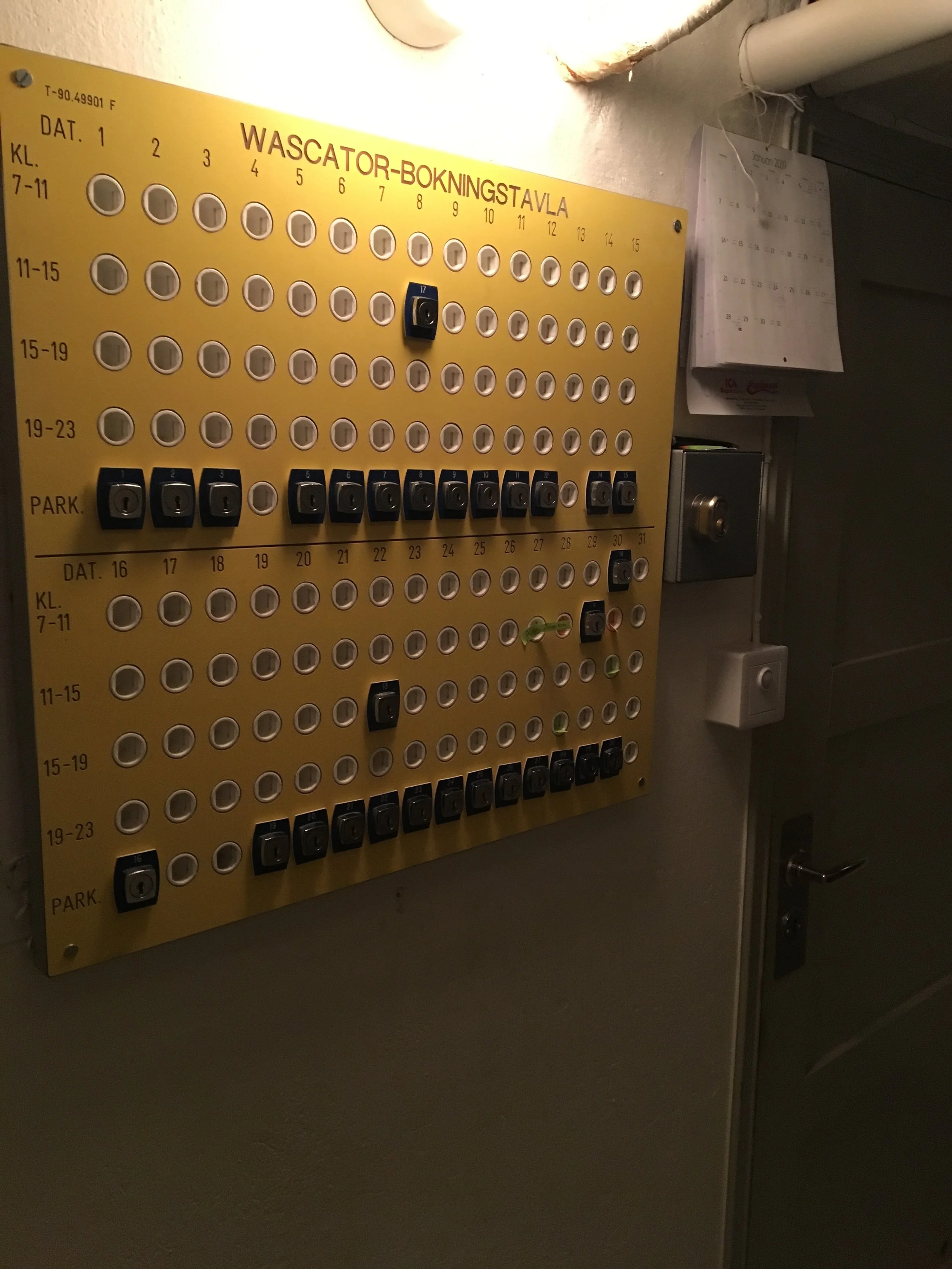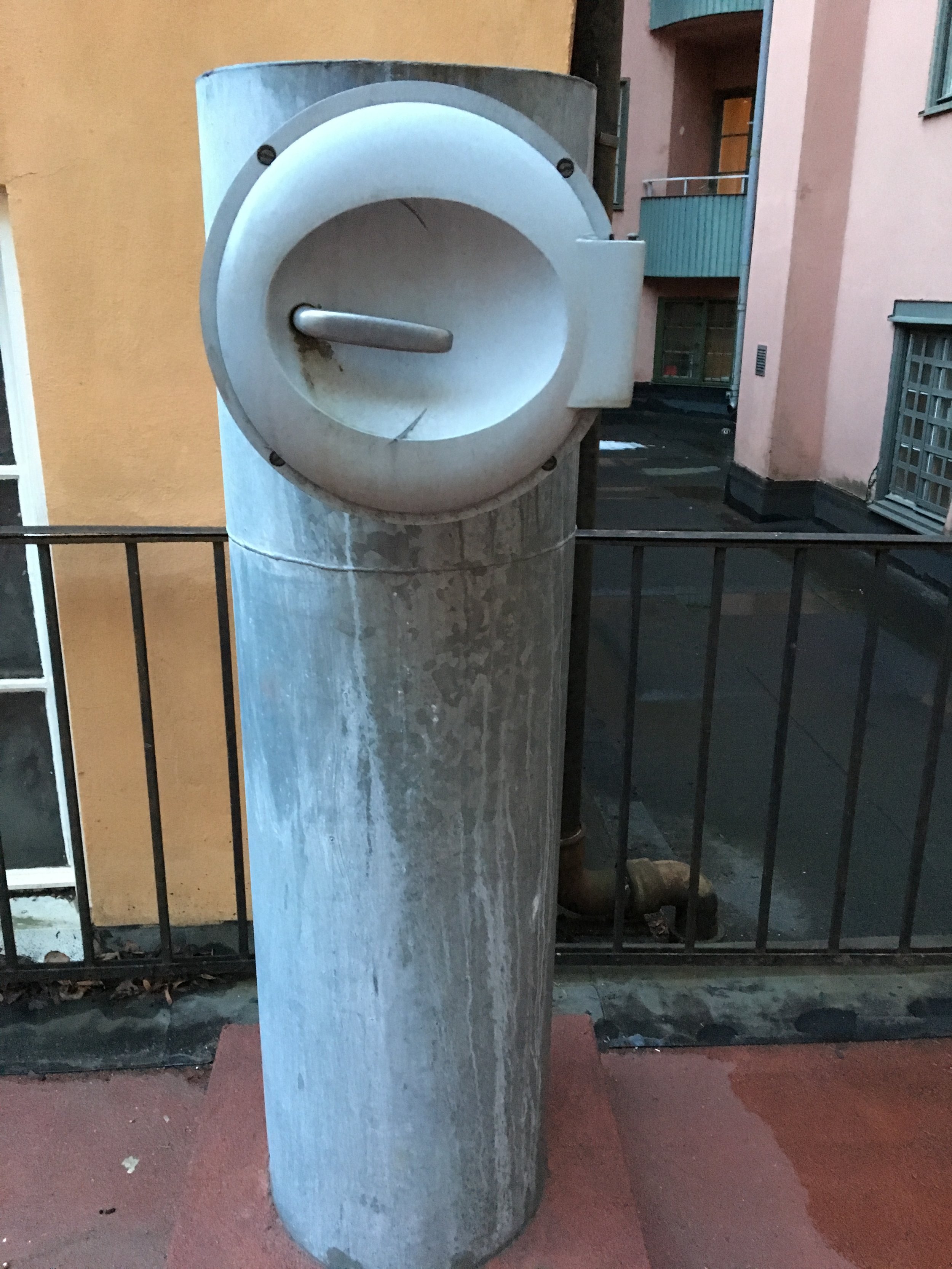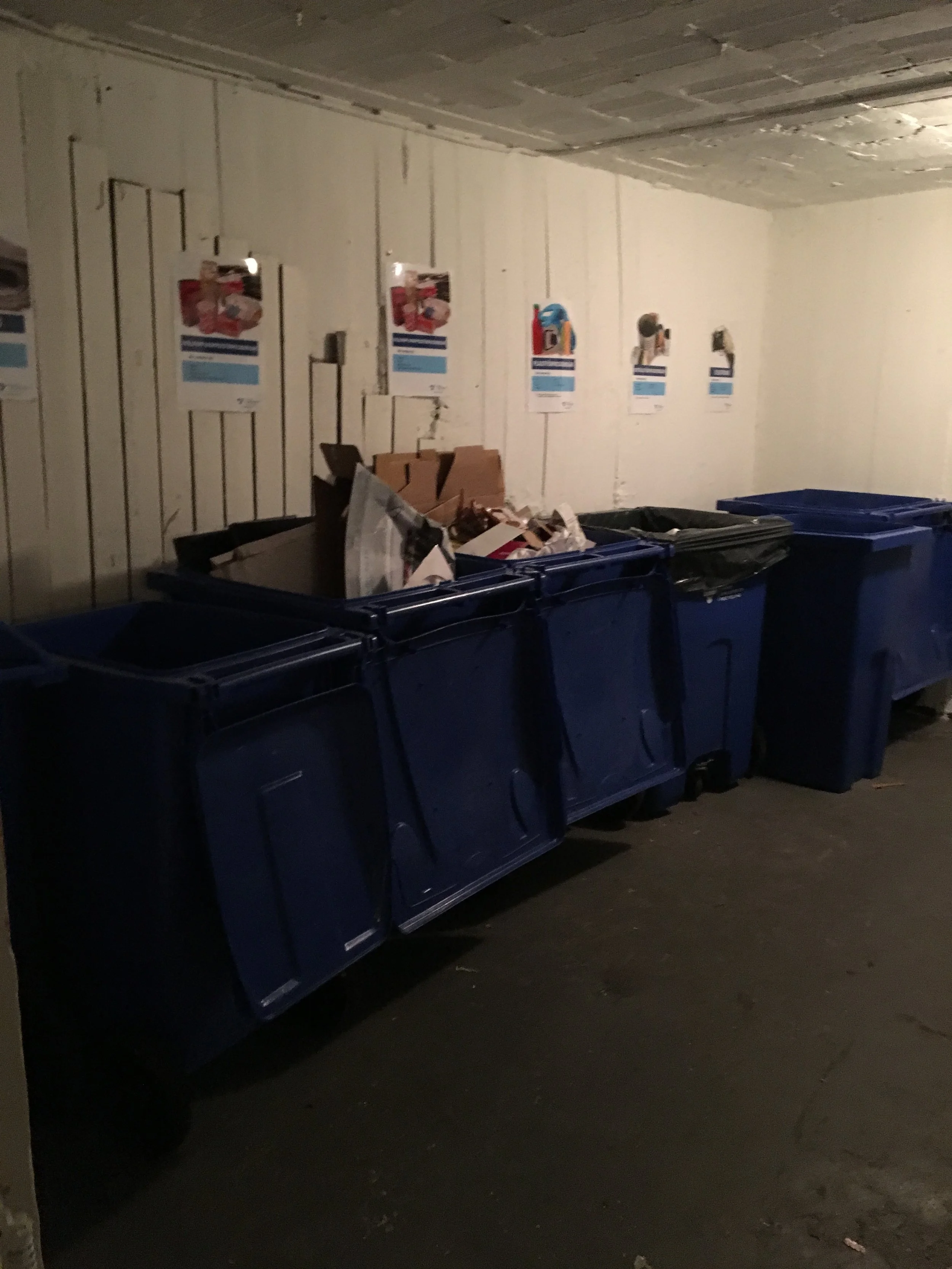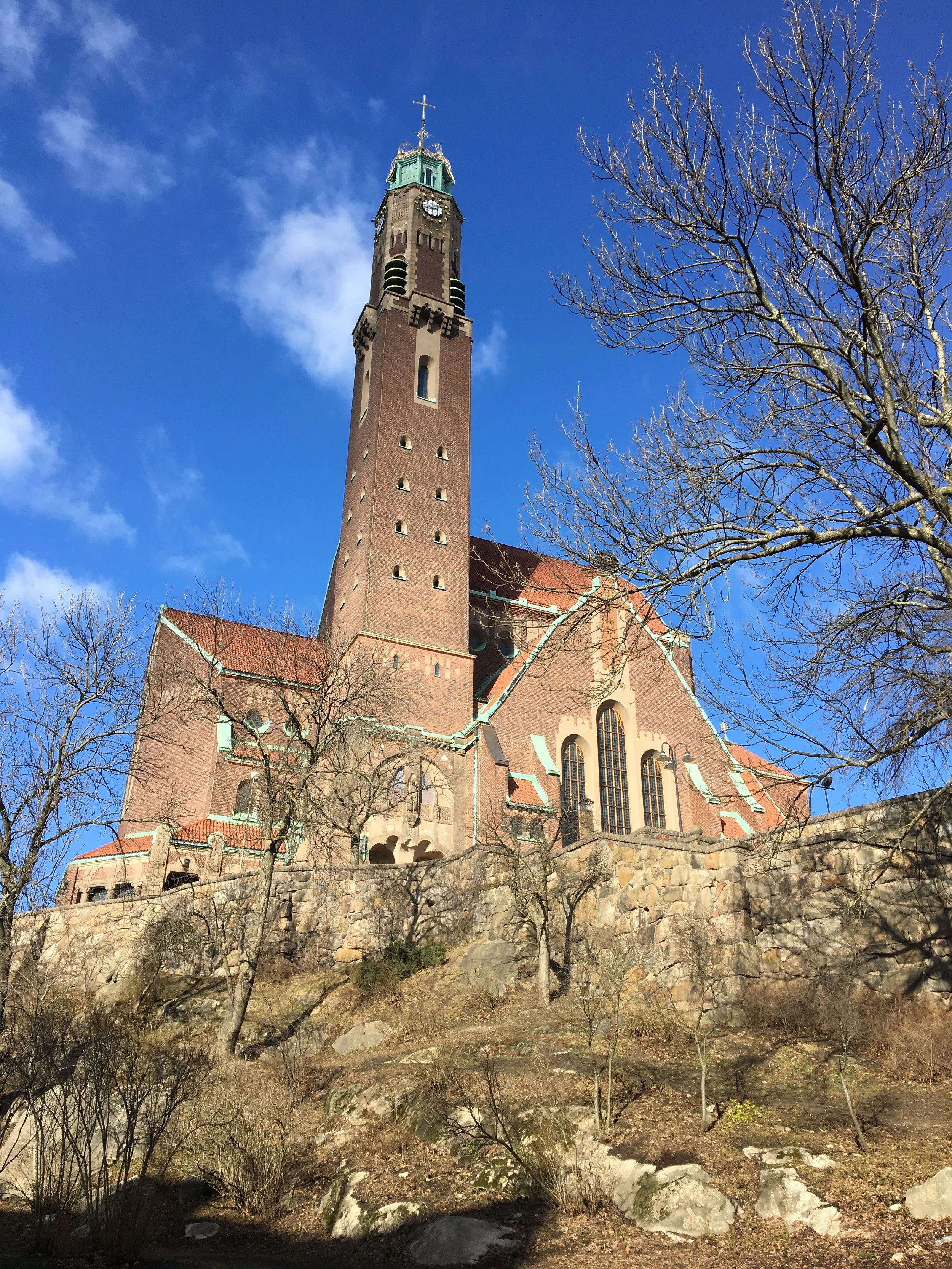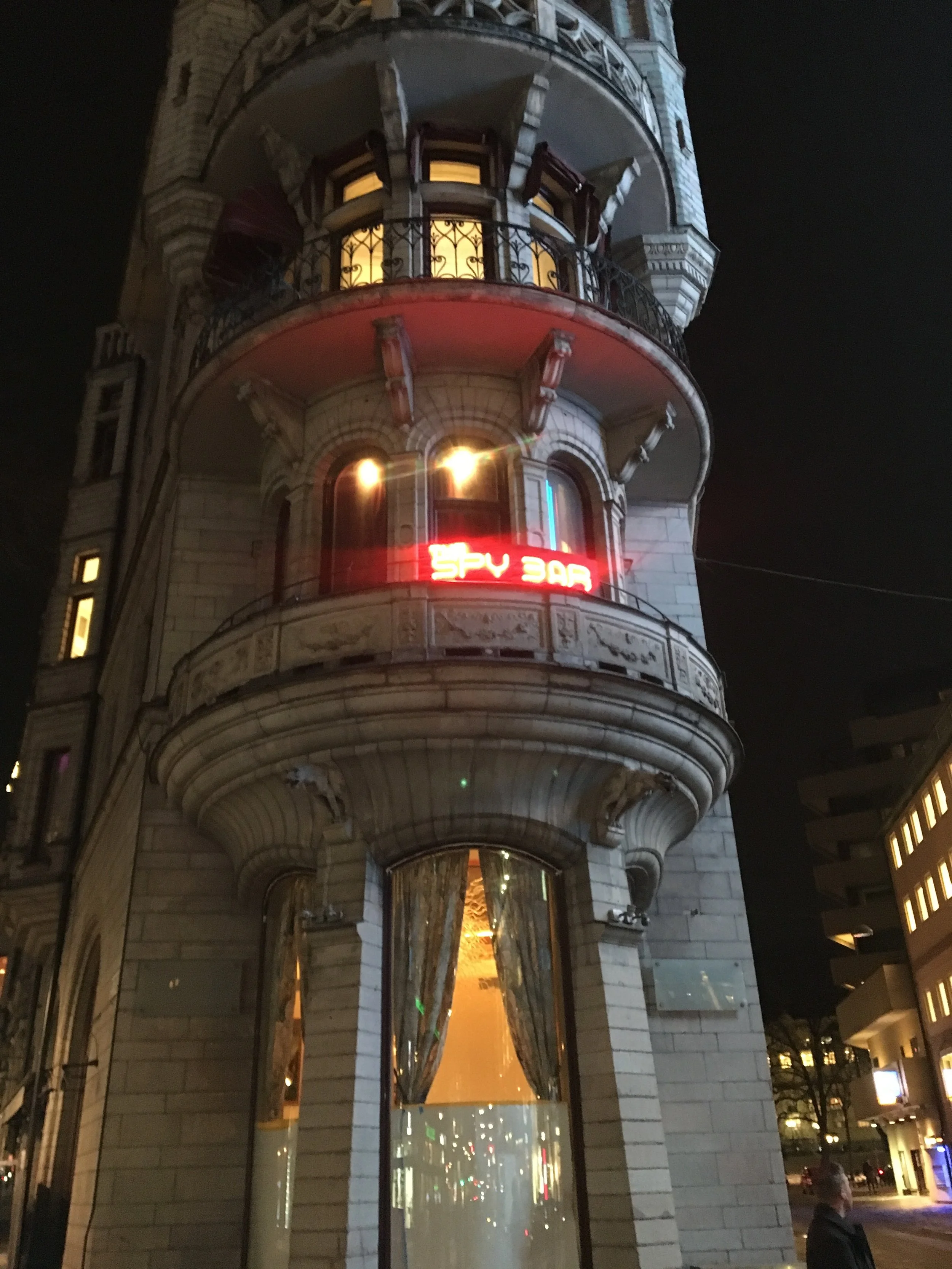Swedish Laundry and Other Curiosities
After six months of living in Sweden, I returned home without having accomplished all of the goals I set for myself. I blame the inordinate amount of time I spent doing laundry and managing the trash.
The whole laundry situation in Sweden was highly confusing. We were thankful to have a small washer and dryer in our apartment, but even with English translation on the machines and in the manual, I still couldn’t figure out how to operate them properly. And I consider myself to be a laundress extraordinaire, having washed at least 7,000 loads of laundry just in the past 25 years.
First, I could not understand what the setting "skapport" meant and whether it was a setting that helped or hurt my clothes. The only options seemed to be skapport, skapport +, or intensive (which sounded even more ominous than skapport). Even Google could not translate these options.
By the way, I tried to learn Swedish during our time overseas but did not succeed. I think the language was designed to keep people from acquiring it, maybe to protect themselves from another invasion attempt by the Danes. However, they should know that modern-day Danes would never want to take over Sweden since they would not be able to wash their clothes properly again.
After I finally figured out how to make the washer work on one cycle, I had to face the dryer. The dryer time selections ranged from 16H to 20H. Was that metric for hecto hours? What was a hecto hour? Did it refer to minutes? Can clothes dry in sixteen minutes? Or maybe it was referring to temperature? It didn't matter in the end because no matter what setting I used on the little machine, it stopped running after a short amount of time.
I tried running another cycle to dry the clothes, but the confounding unit would refuse to go past its initial stop time, and no amount of trickery would outsmart it. I thought perhaps it was stopping because the water drawer was full. Since there is no moisture vent, water collected from the clothes would filter into a long tube; this had to be emptied after each load. Often, there was barely any water in the reservoir, so that wasn't the issue.
The system I finally developed involved using only one setting (skapport +) for washing, then taking all the damp clothes out after about 20 minutes (when the dryer started beeping and wouldn't stop) and hanging them all over the tiny bathroom for days to dry.
Before my Sweden Adventure ended, I had also hoped to learn why Swedes seemed to prefer sharing tiny washing machines in building basements, with inconvenient, infrequent times slots available for use, instead of having washers and dryers in their apartments. Firstly, Swedes are often tall, with correspondingly tall clothing, so why design washers that can only hold two pairs of long pants? Typically, Swedish design is so brilliant; this was a great mystery. Secondly, since many Swedes work full time, why would they want to compete for laundry room slots.
We didn't use the basement washer and dryer in our building because the whole area was very creepy. Using it involved either lots of trips up and down the stairs or having to stay in the basement alone for extended periods. Neither was appealing.
Shared laundry room in our old apartment building
Also, I was afraid of my neighbors. I've heard of people being scolded for laundry room infractions. Of course, you don't know what the rules are because they use untranslatable words in Swedish, but you better not break them!!
When we first moved, a Swedish neighbor entered the recreation room while we played ping pong. She heard me plinking on the piano and asked me to play a song, but I don't play the piano. However, since she was a bit intimidating and we were reluctant to refuse her, my son kindly played for her. After a couple of rousing tunes, I thought we had won her over, but then I realized her real motive: she was buttering us up to determine if we were the culprits of a laundry infraction against her. It seemed that someone had committed the cardinal sin of taking her clothes out of the washer and putting them into a basket!
Even though she readily admitted that she had overrun her scheduled time, she was pretty upset that the next person in line touched her clothes.
We hadn't even been in the laundry room, but she was very skeptical and didn't believe us for a second. Then, calling me into the laundry room, she proceeded to tell me (with an accusatory look) how "someone" also left lint on the floor. We ended our time together with a lesson on sweeping the laundry room, a space I have never used and never will.
Even if I weren't afraid of the basement and the neighbors, I would never have figured out the sign-up system. It involved a big box, a little box, numbers, and two keys. We were number 12, but I didn't know how this applied to the boxes. Honestly, when you move to Sweden, you should have to take a mandatory class in "laundry" before your visa is issued.
Confusing laundry sign-up board
Another unique aspect of life that I observed in Sweden involved the trash. To say that Swedes are trash minimalists is an understatement. After gaining a fuller understanding of the situation while visiting Stockholm before our move, I went home to the U.S. and placed everyone in my family on “trash rations” as a sort of training for our extended stay overseas.
There was NO WAY that our typical amount of garbage was going to fly in Stockholm. Despite my best recycling efforts, we have been known to fill two large cans with trash weekly, even when three kids weren’t living at home and my husband was traveling.
I knew that to live successfully in Sweden, we would have to ration down to a tiny bag of trash per week per person; this was not an easy change. Our 7-pound dog produced more garbage than a typical Swede in a week. I have shared a picture of the apartment building’s trash chute to give you a sense of scale. You have too much trash if it doesn’t fit in that little tube (12” diameter).
Mysterious garbage chute
Tiny door leading to tiny trash chute
Also, I heard tales of people getting in trouble for the content of their trash, namely, recyclables. My son, who lived there for a year before my arrival, convinced me that someone regularly checked the garbage for offenders. I’m pretty sure it was the same person who ran the laundry room sign-up. They probably finger-printed the bags and scanned them to find out the Personnummer of each offender, which we all know tells anyone in Sweden everything about you. Therefore, it was imperative that the recycling was clean. I spent two hours daily rinsing out plastic take-out and grocery containers for recycling. Hopefully, there wasn’t a water shortage - I was pouring through gallons.
We all feared putting recyclable contraband into that tiny, mysterious, smelly garbage chute, and we had no idea where it led. We were all quite nervous; I once saw my husband pull trash out of the trash can in our apartment to clean and recycle it.
One must be careful to sort into the proper bins
All kidding aside (well, truthfully, I haven’t been kidding), we benefited from our experiences with laundry and trash in Sweden. First, we learned to scale down our waste by not eating as much so we wouldn’t have any garbage. Cutting back led to weight loss, a welcome benefit. Also, we helped the environment by learning to be happy wearing dirty or slightly damp clothes. If we didn’t wash them, we still had time for other things in life.
In addition to the questionable laundry and trash situations, I encountered other curiosities while in Stockholm. One day, I was walking down the street when two dinosaurs happened past. Another time, I was working by my living room window when I heard clopping hooves outside. Hopping up to look, I saw about twenty of the king’s horses walking by, out for their winter exercise.
All the king’s horses and all the king’s men
One cold day, while walking to the famous Mr. Cake restaurant, I encountered an incredibly beautiful church on a hill. Underneath, through a cave-like entrance, was a peaceful crypt. A man with a trumpet was playing mournful hymns on the hill by the church’s entrance.
One night, as I walked by the apartment window, I saw flashing blue lights by the building across the street. It looked like a small fire behind a car parked by the curb. To this day, we don’t know what was happening – but we think maybe someone was trying to burn their trash so it would fit in the chute, and it got out of control.
A curious place I frequently pass is called “Spy Bar.” My son told me it was a joke among his colleagues, and I thought maybe it was a pick-up joint, but later decided it was where citizens gathered to report on laundry usage and trash disposal infractions.
The mysterious Spy Bar. Is it for real? Stay tuned.
Perhaps one of the weirdest curiosities in Sweden were the subway ads. The “thumbs up cat” was one of my personal favorites. I had no idea what the ad said, but it was fun to make up my own caption. I’m pretty sure it said, “Welcome to Laundry Hell.”
Weird cat ad in the subways
Every day, when I was not doing laundry or recycling, I encountered something fascinating, beautiful, or strange in Stockholm. I learned to be observant so I wouldn’t miss these treats. And on those days when I didn’t get outside, it was because we had run out of clean clothes and had ordered take-out. Or we were hiding from the neighbors.



